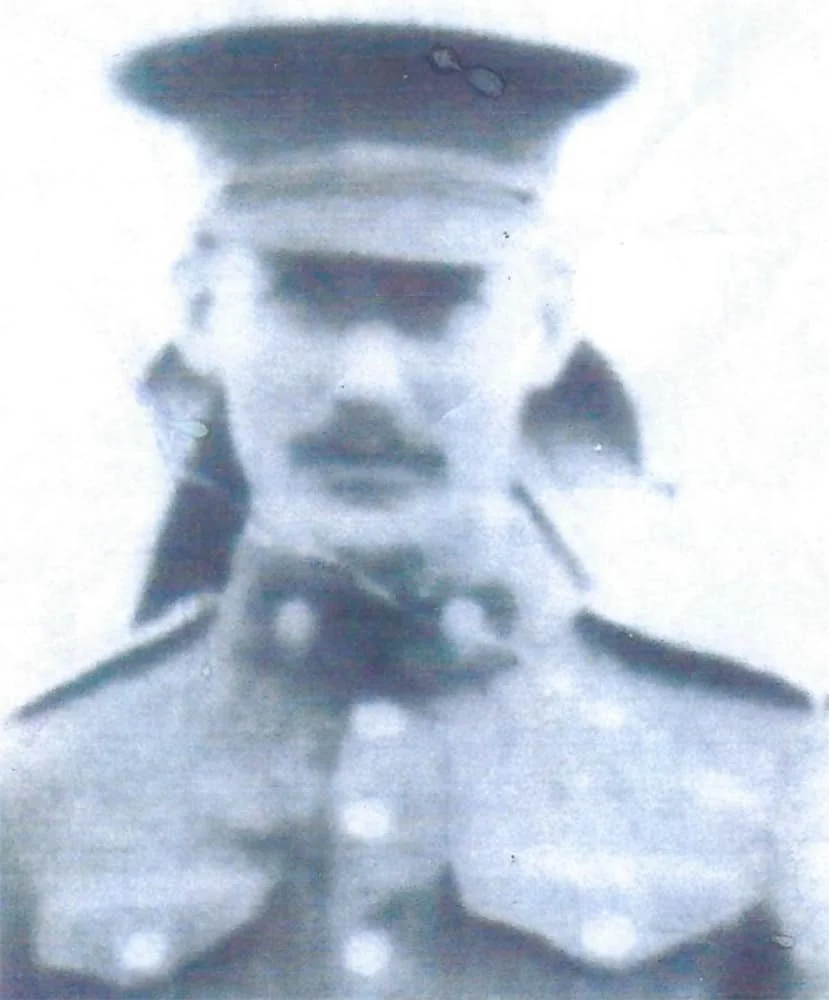Private Norman Mackenzie
Army
Salvador, Saskatchewan
Died: Apr 28,1917 Commemorated at Vimy Memorial, France
“We are the Dead. Short days ago, we lived, felt dawn, saw sunset glow. Loved and were loved, and now we lie in Flanders fields.” – John McCrae
Norman MacKenzie was born in Gairloch, Scotland, July 3, 1891. He came to Salvador, Saskatchewan, where his sister and brother-in-law Christina & Alex Fowler had a homestead. Norman joined the Canadian Expeditionary Force in Regina on June 3, 1916. On June 9, he had a medical exam at Camp Hughes, Manitoba. He was noted as being 5’9”, 150 pounds with fair complexion, brown hair and blue eyes, and was declared fit for service.
He was assigned to the 195th Battalion, 15th Reserve as a Private. The 195th Battalion became the 5th Battalion, Saskatchewan Regiment. He sailed for England from Halifax on October 31, 1916, and arrived in Liverpool on November 11. He was “taken on strength” of the 32nd Battalion, Canadian Expeditionary Force and then the 15th Reserve Battalion on January 4, 1917.
He arrived in France on March 5, 1917, and joined his unit in the field on April 5. The following description of the Battle of Vimy Ridge is from Pierre Burton’s book “Vimy”:
“On April 9 at 6:00 AM, 49,000 Canadian troops left their trenches to attack Vimy Ridge. The 5th Battalion (Saskatchewan Regiment) formed part of the 2nd Brigade, under the 1st Division. An ordinary Private carried a rifle, 120 rounds of ammunition, two mill bombs, five sandbags, forty-eight hours’ rations, a waterproof sheet, gas mask, smoke helmet, a ground flare, a filled water bottle and pick and shove. The equipment weighed at least 40 lbs.
The 1st Division, on the right of the Canadians’ line, was assigned the longest advance of the Vimy Ridge attack, over 4,000 yards. They advanced up the ridge through driving wind, snow and sleet until they had taken almost the entire crest by mid-afternoon. The 5th Battalion reached their objective, and by 2:00 PM, Canadian soldiers held Vimy Ridge. The battle left 3,000 Canadians dead and another 7,600 injured”.
On April 28, the 1st Division was assigned to capture what was known as the “Arleux Loop.” The following account is from Norm Christie’s book “For King and Empire”:
“The 5th attacked to the north of the village. At 4:25 AM, they advanced through uncut German barbed wire into the village. By 6:00 AM, Arleux was com- pletely in Canadian hands. One thousand Canadians were killed, wounded or missing during the action”.
That same day it was reported from the base that Norman MacKenzie had been killed in action. He had served with his unit for 23 days in the field. He was 25 years old. His mother was awarded his medals and decorations, the British War Medal, Victory Medal, and a plaque, scroll, and Memorial Cross.
As there is no known grave, he is commemorated by name on the Vimy Memorial in France as well as by name on the Luseland cenotaph. His family placed a plaque in his memory on his family’s gravesite in the Salvador cemetery in 2016. His name is also inscribed on page 285 of the Book of Remembrance of the First World War in the Memorial Chamber of the Parlia- ment of Canada (Ottawa).
Submitted by Barb Fowler, great niece of Norman MacKenzie.
Inscription – His name as it is inscribed on the Vimy Memorial (2010). Over 11,000 fallen Canadians having no known place of burial in France, are honoured on this Memorial.


